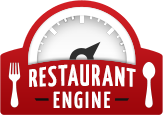Senior Analyst Michael Halen on the State of Restaurant Industry
“Social distancing measures, primarily the dining room closures, have really hurt restaurant sales throughout late March through May,” said Bloomberg restaurant analyst Michael Halen today on national radio. “In May, we could see casual dining, same-store sales down still in the 40% to 60% range.” With estimates of permanent closures ranging from 25% to as high as 80%, Halen forecasts a long battle before the industry fully recovers. “A lot of sell-side analysts are looking through 2022 to be a wash, or even to be down significantly.”
Restaurants have been one of the hardest-hit industries by the coronavirus pandemic, with sales dropping as much as 89% amid mass shutdowns. Pre-COVID-19, restaurants employed approximately 10% of the entire U.S. workforce. As of mid-May, employment in the restaurant industry had halved. Restaurant rehirings in late-May helped buoy the Bureau of Labor Statistics data for May when the bureau reported nationwide unemployment at 13.3%. Most of those rehirings were attributable to funds from the Paycheck Protection Program (PPP).
Halen explained that fast-food chains with significant drive-thru businesses like McDonald’s, Wendy’s, and Jack in the Box are performing the best. “They’re doing 70% of their sales at the drive-thru. That’s really helped them maintain their sales.”
In contrast, casual dining establishments without drive-thru windows are suffering. He admits, “They’ve been able to double or triple their takeout sales, delivery and to-go, but delivery is very, very low margin. You’re having to pay higher delivery fees. You’re paying, especially to third party aggregators, you’re paying higher paper and packaging costs, and you have fewer high margin drink sales.”
Some analysts wonder whether alcohol can help make up the difference for non-drive-thru restaurants. Many states passed temporary measures to allow alcohol delivery alongside food orders from restaurants. In Texas, those temporary measures became so popular that they might become permanent law. U.S. Treasury Secretary Stephen Mnuchin is even considering COVID-19 relief for restaurants by way of deferred federal excise taxes for wine, beer and spirits.
However, Halen is less optimistic about alcohol add-ons. “So some of the states are allowing alcohol sales, which is helping. But, delivery mix is the issue. What we’re seeing is a lot of people, especially older folks, aren’t in a rush to go back to the dining room. So, delivery mix is going to continue to be higher, we think, going forward… And this higher mix of delivery is going to continue to weigh on margins moving forward, as well as higher minimum wage rates and higher commodity commodity costs due to supply chain issues.”
Despite dismal restaurant revenue, publicly traded restaurants are valued at 58% higher earnings multiple than their 13-year average. This contrasts with a second wave of coronavirus infections totaling 2 million total cases in the U.S., with 20,486 new cases and 834 deaths added since yesterday. Federal Reserve Chairman Jerome Powell held an hour-long press conference yesterday and explained that it will take years for a return to anything like the strong labor market that the U.S. enjoyed before the coronavirus pandemic.
Graph of New U.S. COVID-19 Cases, U.S. Centers for Disease Control and Prevention
Photo by Terry Jaskiw on Unsplash




Leave a Reply